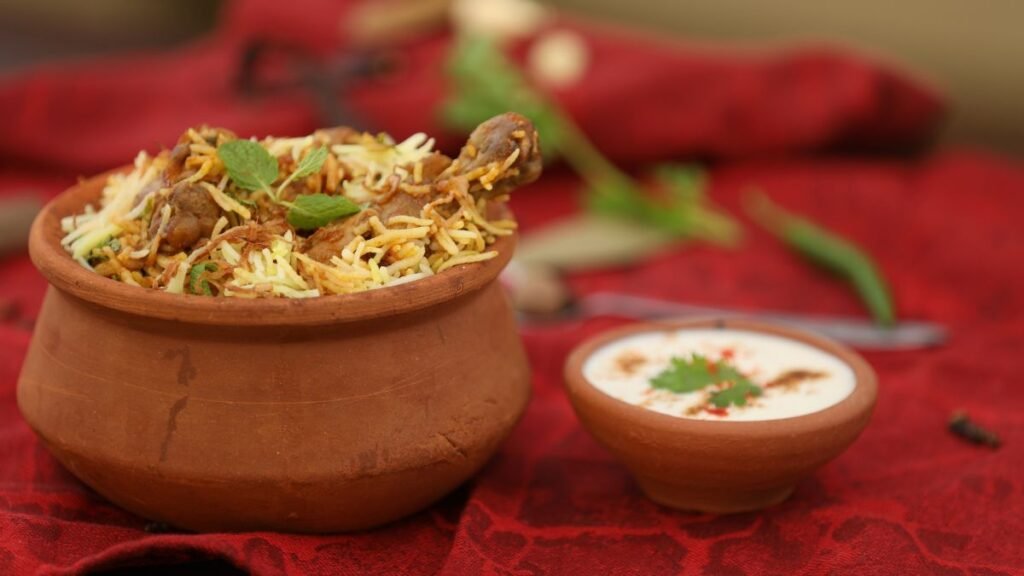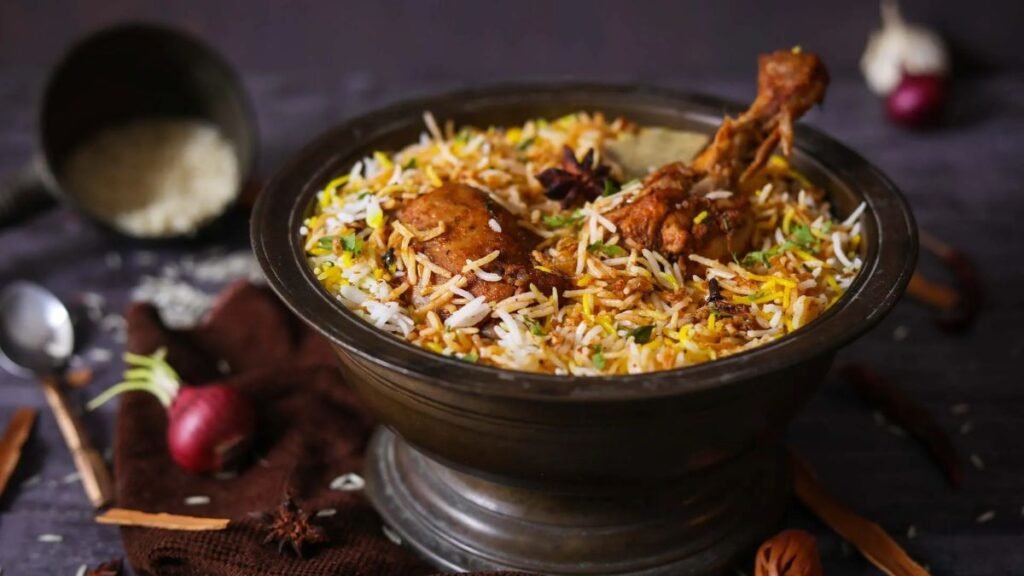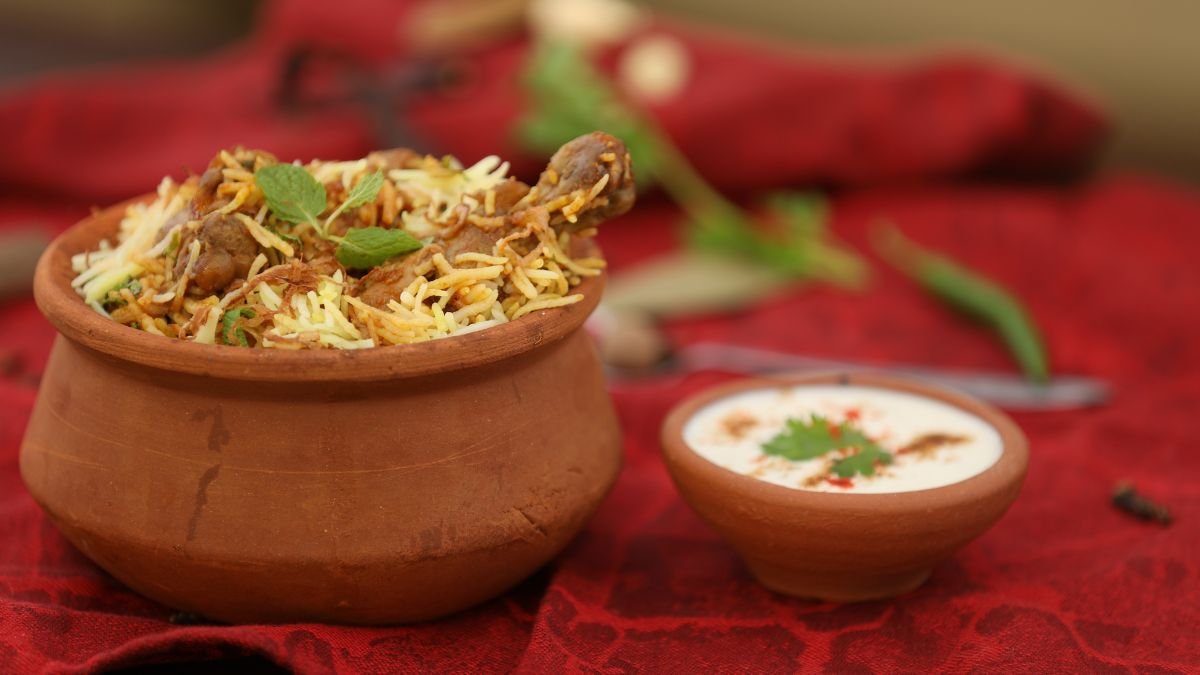All About Biryani | 5 Types | 5 Facts
A Rich and Flavorful Indian Dish
Biryani is an evergreen classic that really needs no introduction. Biryani is one of the most amazing royal delicacies introduced to India by Mughals. Biryani is a mixed rice dish with its origins among the Muslims of India. It can be compared to mixing a curry, later combining it with semi-cooked rice separately. This dish is especially popular throughout the Indian subcontinent. It is made with Indian spices, rice, and meat (chicken, goat, prawn, or fish) The word ‘biryani’ is derived from a Persian word, birian, which means fried before cooking. It is one of the most popular dishes, which has acquired a niche for itself in South Asian cuisine.

Origin of Biryani
The word Biryani is derived from the Persian word Birian, which means ‘fried before cooking’ and Birinj, the Persian word for rice. There are various theories related to the origin of this scrumptious dish. Many historians believe that biryani originated from Persia and was brought to India by the Mughals. According to historian Lizzie Collingham, the modern biryani developed in the royal kitchens of the Mughal Empire and is a mix of the native spicy rice dishes of India and the Persian pilaf (pulao).
Indian restaurateur Kris Dhillon believes that the dish originated in Persia, and was brought to India by the Mughals. Another theory claims that the dish was prepared in India before the first Mughal emperor Babur conquered India
Which city is known as the World Capital of biryani?
The answer is Hyderabad, Hyderabad is considered as the Biryani World Capital of India. The exact origin of Biryani is uncertain but Hyderabadi Biryani is the most famous. Being the blend of Mughalai and Iranian cuisine, the flavors and essence of Hyderabadi Biryani are distinct. It is prepared from rice using the dum method (a process of cooking on the slow fire) of cooking. Long-grain saffron rice with a scent of rosewater, cardamom, and cinnamon, peppered with chunks of delicately flavored chicken, mutton, or vegetables.
These are the essential types of biryani
Lucknowi, or Awadhi, Biryani
The crown king of all biryanis, Lakhnavi or Awadhi biryani is mildly spiced, to be eaten with gravy on the side. Lucknowi biryani was created in Northern India by Mughal royals in Awadh around the 18th century when culinary finesse rose to its peak in the royal kitchens. Lucknowi is a kind of pakki biryani which entails the rice and mutton or chicken to be cooked 80% separately and then to be cooked together in dum pukht (a process of cooking on the slow fire).
The rice is cooked separately in spices, and marinated chicken is added later in a separate layer and cooked in a vessel over a low flame in dum pukht style (meaning in a pot sealed with flour) for hours. Delicate whole spices like saffron and star anise play the role of showcasing, rather than overpowering, the rich flavors of the meat. The subtle fragrance stays on as an after-effect.
Kolkata Biryani
Kolkata biryani is all about the potatoes and eggs and a hint of sweetness Calcutta biryani is distinguished by its yellow-colored rice which is soaked in saffron and kewra water and, no matter what people tell you, it can not be simply described as a version of the Awadhi biryani. Containing meat cooked in yogurt, this biryani is full of potatoes and boiled eggs, along with a touch of sweetness, cinnamon, and nutmeg.
Hyderabadi Biryani
Hyderabadi biryani is generally believed to have originated in the kitchens of the Nizam of Hyderabad of the historic Hyderabad State, as a blend of Mughlai and Iranian cuisine. Hyderabadi biryani is a staple of Indian cuisine. Biryani reached Hyderabad with the invading army of the Mughal emperor Aurangzeb in the late 1600s, and the chefs for Nizam developed 47 new varieties for royal consumption. The vegetarian version is called Tahiri biryani.
The quintessential Hyderabadi biryani cooks raw goat meat and rice together until the meat flavors seep into the rice. Fried onions, mint, and coriander leaves add flavor, but it’s the strong spices and sourness that define Hyderabadi biryani. Hyderabad biryani is a kind of Kachchi biryani which requires 70% cooking the mutton and rice together. rice should be 30% pre-cooked while the marinated mutton needs to be 100% cooked with rice. It needs experience, a lot of experiments and thorough attention and a helper and good hold over the flames, and rice should neither be mushy, nor raw.
Malabar Biryani
Another special Biryani from the Kozhikode region of Kerala, but this one is cooked in dum style (a process of cooking on the slow fire), making it moister. Varieties include mutton, chicken, prawn, and fish. Fried onions give it a brownish color, and it’s garnished with sauteed dry fruits. Spices never interfere with the taste of the meat. Aroma meets spice for a winning combination in this version. That’s why you see this biryani full of cashews, raisins, cloves, and cinnamon because they all grow in Kerala.
Thalassery Biryani
This coastal Malabar recipe uses small-grain Khyma or Jeerakasala rice instead of Basmati, and it uses a lot of ghee. Fish or prawns are often used instead of the chicken or mutton used in other regions. All the main ingredients are cooked separately and mixed together later. Onion, garlic, ginger paste, lime juice, curd, coriander, and mint leaves are used, along with Indian spices. Chili content is low, and it is garnished with cashew nuts and sultana raisins.
Ambur Biryani
Ambur chicken biryani is a specialty of nawabs of Arcot who first cooked and made this biryani recipe most popular in southern parts of India, Ambur in Tamil Nadu. What’s special about this biryani is that it is cooked on wood fires and a special variety of short-grain rice called seeraga samba rice (jeera samba rice) is used. Dried chili paste and whole spices are the trademarks of this biryani. The dish is usually accompanied by sour eggplant curry. Cooked in dum style (a process of cooking on the slow fire) using coconut milk, this recipe includes curd and mint leaves.

5 Amazing Facts on Biryani
- The word “Biryani” is derived from the Persian language. One theory is that it originates from “birinj”, the Persian word for rice. Another theory is that it derives from “biryan” or “beriyan” (to fry or roast).
- There are more than 20 types of biryani around the world and the majority of them are from India. Few Names are Kashmiri Biryani, Ambur Biryani, Calcutta Biryani, Lucknawi Biryani, Malabar Biriyani or Thalassery Biryani, Mughlai Biryani, Ambur Biryani, Sindhi Biryani, Bhatkali Biryani, Beary Biryani, Kozhi Biryani, Assamese Kampuri Biryani, Bombay Biryani, Dindigul Thalappakatti Biriyani, Tahiri Biryani, Kachchi Biryani, Memoni Biryani, Kalyani Biryani, Goan Fish Biryani, Biryani Pilaf. However, the traditional tag goes to Mughali biryani, Awadhi biryani, and Hyderabadi biryani.
- Biryani is the most Googled/Searched Dish of 2021
- Biryani was only cooked with one meat that was Mutton but over a period of years, it is now cooked with Chicken, Fish, Egg, and Vegetables. There is a never-ending debate that has taken place that Biryani cooked with Vegetables is not Biryani, its Pulav.
- Biryani is the most expensive dish in India with a plate of biryani costing up to Rs 10000. The most expensive biryani is called the Royal Biryani. It is made from 23-carat gold and silver leaves and served in a handcrafted golden pot.
Biryani is a truly delicious dish that’s enjoyed all over the world. With its diverse origins, it has become a favorite for many people. Whether it’s a traditional Mughlai biryani or a spicy Lucknawi biryani, it’s sure to delight your taste buds. So, what are you waiting for? Try out a biryani today!

